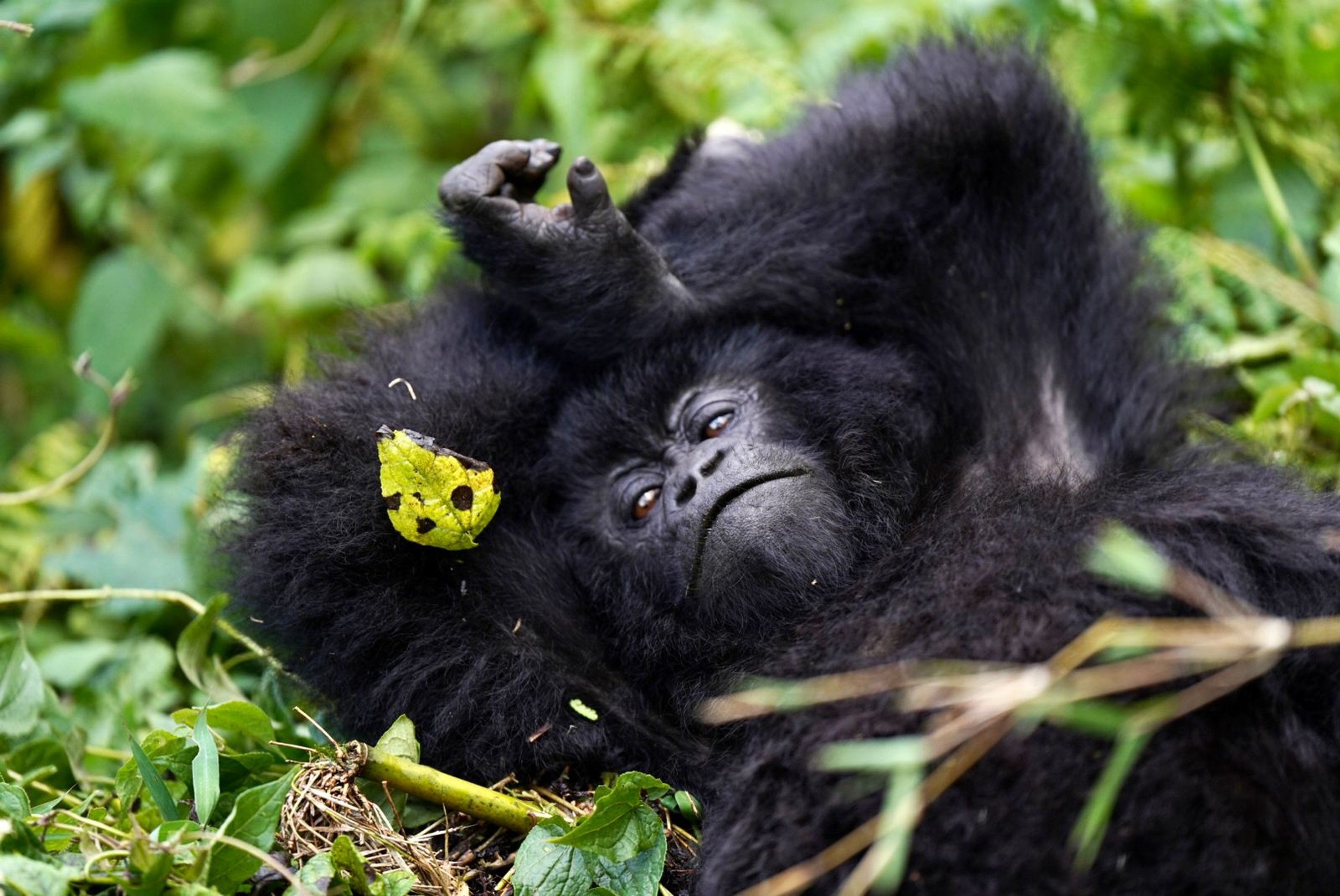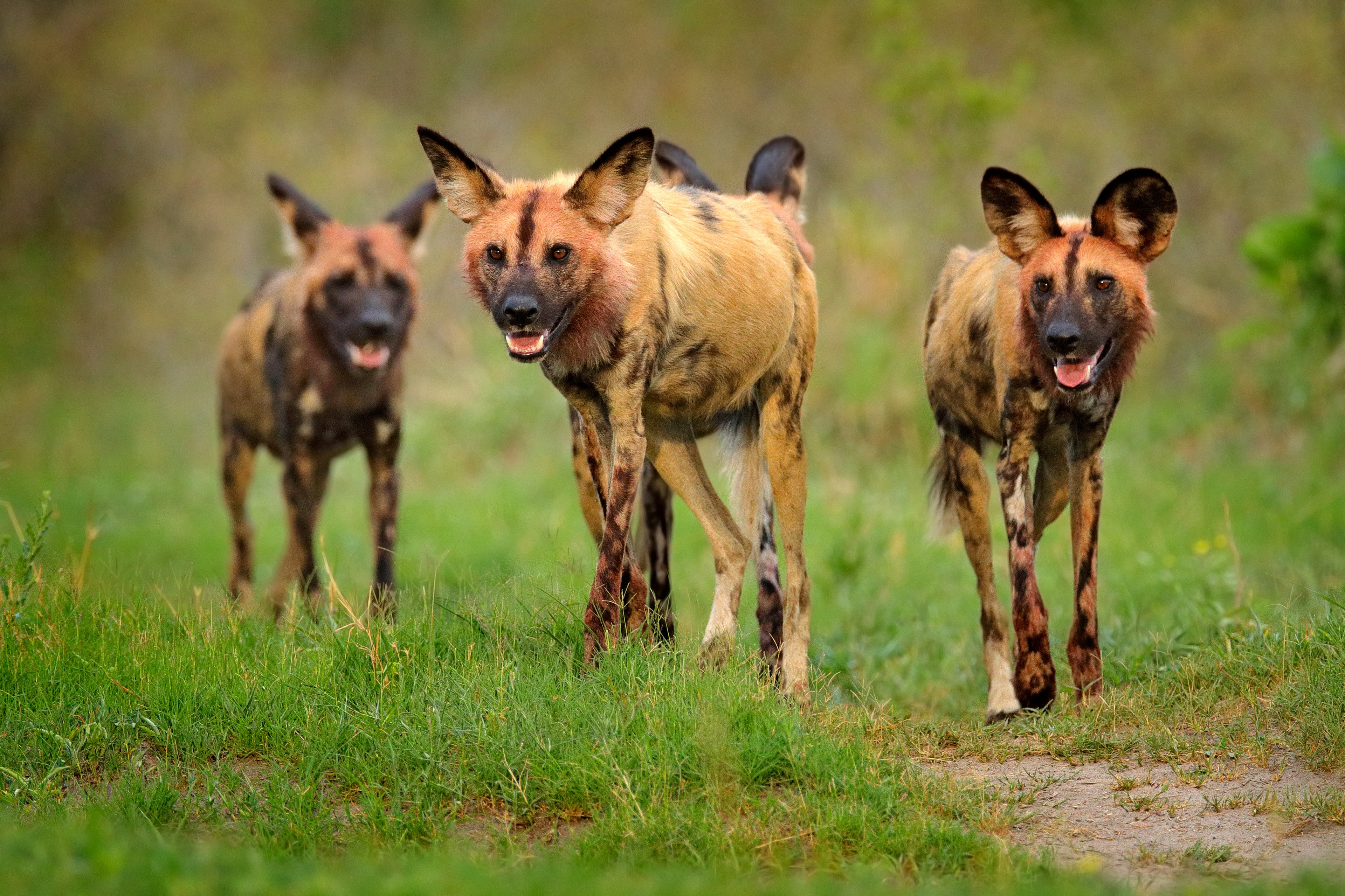Where are gorillas found in Africa?
You’ll find these magnificent primates throughout equatorial Africa, mostly in the tropical rainforests that cover the Congo Basin which spans six countries including Cameroon, the Central African Republic, the DRC, Guinea and Gabon. You find the critically endangered wild mountain gorilla further east in the Albertine Rift, a vast nearly 1000-mile-long area that encompasses parts of the DRC, Uganda and Rwanda. However, not all of these areas are easily accessible to tourists. Travel to the DRC and Central African Republic in particular can pose security threats due to escalating political violence. ROAR AFRICA does not operate gorilla treks in any of the countries within West Africa like Gabon, Cameroon or Guinea nor several countries within Central Africa, including the aforementioned Central African Republic.
However, Rwanda and Uganda are spectacular ROAR AFRICA gorilla safari options. Both countries have the infrastructure, top-tier lodges, and conservation measures in place to create a life-changing wild mountain gorilla trek experience, one that respects the local landscape and contributes to the preservation of this extraordinary species.
Volcanoes National Park, Rwanda
Only 1063 mountain gorillas still roam free across the Virunga Massif. And 604 of them live in Rwanda’s Volcanoes National Park, a triumphant symbol of conservation success across Africa and ROAR AFRICA’s top destination for this experience. This storied national park sits right on the border with the DRC and was home to years of game-changing scientific research by primatologist Dian Fossey, who established her Karisoke research center between two of the five volcanoes that make up the park. The sacred energy and history here is incredible to experience. Despite years of conflict and heavy poaching throughout the 1990s, the park today is a roaring success with luxury eco-lodges, spectacular education centers, expert guides and trackers and impact-led conservation that is succeeding in slowly boosting gorilla numbers.
Then again, it’s no coincidence that this small country – the first nation in the world with a 61% female majority in parliament and 50% of government positions also held by women – is a conservation leader in Africa. A milestone expansion of Volcanoes National Park announced a few years ago is intended to benefit everyone, adding 23% more habitat and a larger buffer zone for the growing gorilla population. It will also create an estimated 1 700 jobs, and all those residing within the current buffer zone will be compensated and relocated to newly constructed “green” villages, complete with health services, schools and green belts for farming. It’s a massive, ambitious undertaking and a game-changer for conservation.
Bwindi Impenetrable Forest, Uganda
With stunning and varied landscapes, unique wildlife opportunities and friendly people, Uganda has a lot to offer. Home to Africa’s tallest mountain range (the Rwenzoris), the source of the Nile (the world’s longest river) and the continent’s largest lake, Uganda’s most iconic wildlife experience is trekking up to our planet's last mountain gorillas in their misty habitat. Bwindi Impenetrable Forest National Park is located in the country’s southeast on the edge of the Rift Valley. Within the thick forest you’ll find approximately 500 mountain gorillas, with twenty-one family troops habituated for tourist viewing. It’s worth noting the Uganda’s gorilla treks are more affordable than that of Rwanda which intentionally operates a high-cost, low-footprint responsible tourism model.
Mgahinga National Park, Uganda
The smallest national park in Uganda is also one of the newest in Africa, established in 1991. Like Bwindi Impenetrable Forest National Park, Mgahinga is home wild mountain gorillas, although the number is tiny with just one habituated gorilla family. You’ll also find rare golden monkeys and an incredibly variety of bird species within the park.
Virunga National Park, DRC
The third location of Africa’s wild mountain gorillas is across the border from Rwanda in the DRC’s Virunga National Park, part of the volcano chain that makes up the Virunga Massif. A vast country rich in mineral deposits, wilderness and virgin jungle, Congo is also home to lowland gorillas which you find in Kahuzi Biega National Park and even endangered golden monkeys. ROAR AFRICA does not operate safaris within the DRC due to safety issues and political instability. Gorilla numbers in the Congo are sadly in freefall due to conflict, poaching and disease, although conservation efforts are in effect.
Best time to visit Africa for gorilla trekking
While one can experience primordial paradise and gorilla trek year-round, the dry season runs from mid-December to early February and again from June to September. Many would consider June to September the most optimum time to explore Uganda and the dense rainforests that cover Rwanda’s sacred volcanoes because by day you’ll often find light cloud cover that makes for more comfortable hiking and ambient temperatures. Also, without heavy rain, visibility is often clearer through the forest canopies.
However, during the rainy season the jungle is incredibly lush, and the air is cooler. Although the terrain is mucky and can be tougher to navigate, with the appropriate gear and level of fitness, gorilla trekking is absolutely doable for people of every ability and still incredibly enjoyable. For those who are struggling, skilled porters and even stretchers are on hand to help you fully immerse in and enjoy this experience of a lifetime. For avid birders, the tail end of the rainy season in late May is also bird breeding season and the skies light up with colorful plumage and incredible opportunities for sightings.
Trekking is a year-round activity
So, in essence, if you don’t mind a bit of muck and a solid trek, embrace the less-busy rainy season when the Land of a Thousand Hills reaches its peak emerald glory. However, for those who aren’t seasoned hikers, the dry season is the ultimate reward. Although it’s important to note as we mentioned before that any and all treks are subject to permits, which can be like gold dust and book up a year in advance.
Practical tips for gorilla trekking
We furnish our clients with a detailed packing list and all of the information they could possibly need well-ahead of any ROAR AFRICA trip, in this case, a gorilla trek. And of course, all permits, guides and accommodations have been pre-booked. From the second you arrive at Rwanda’s Volcanoes National Park or Uganda’s Bwindi Impenetrable National Park, our specialist on-the-ground team will wrap you in care and love, guiding you through every step of the transformative, awe-inspiring wildlife experience to come.
What to pack
Most of the top-tier lodges we partner with, like Rwanda’s Singita Kwitonda and One&Only Gorilla’s Nest come with fully equipped gear rooms stocked with gators, walking poles and other trekking aids. However, on our list of guest must-brings are thick gloves to protect your hands from stinging nettles, good, comfortable hiking boots, thick socks, cotton long-sleeve tops and waterproof trousers. A small backpack will hold your water, camera gear and any additional sunscreen for the hike itself. Depending on the weather, a lightweight waterproof jacket and cap or beanie will add to your comfort.
Safety procedures
Once in close proximity to the habituated gorillas, every member of the hike dons a surgical mask to protect these precious primates from exposure to disease and respiratory infections. Gorilla DNA is so close to that of humans, they they’re just as susceptible as we are to coming down with colds and sicknesses, but they don’t have the exposure and vaccination-based immunity we have to so many illnesses. And of course, prior to your trek, you will receive a full safety briefing and detailed description of the spectacular experience to come from your experienced, specialist guide who will be with you every step of the way toward primordial paradise.
Contributing to gorilla conservation
As discussed previously, there are two main gorilla species and four sub-species –and unfortunately, all are classed as endangered, with wild mountain gorillas being the most at risk of extinction. As the privilege of bearing witness to one of our closest primate cousins, who share 97% of our DNA, washes over you, one’s heart cracks open. The reality of what it would mean to lose this critically endangered species hits home. To borrow the words of Volcanoes National Park Chief Warden, Prosper Uwingeli, you realize that “conservation is life”.
Responsible Tourism
Conscious, responsible tourism is critical to gorilla conservation and provides the financial capital and social awareness needed to fund protective measures and scientific research. Rwanda, in particular, has seen huge success in this area, and unlike many other nations grappling with an uphill conservation climb, the Rwandan government are heavily involved and deeply committed to protecting the gorilla species that Rwandans consider their national treasure. As a country, they have implemented a collaborative conservation model that includes every facet of society to tackle the complex threats to the survival of these gorillas. Chief among these threats is loss of habitat, snares, and the spread of disease, all of which are caused by the pressures of a rapidly growing population encroaching on the national park. But sensible initiatives are helping to reduce human-animal conflict and foster understanding. These include limited, high-cost trekking permits and a tourism-revenue-sharing model that puts 10% of all profits into the hands of the communities, most of whom are subsistence farmers.
Uganda too has seen conservation successes, and like Rwanda, revenue generated from responsible tourism funnels directly back into its national parks and supports the hundreds of local people, guides, trackers, primatologists and conservationists integral to the fabric of any gorilla trekking experience.
Conservation challenges
Sadly, gorilla conservation efforts in other Central African countries are under huge duress due to ongoing conflicts, population expansion, habitat loss, and poaching. Without stability, it’s incredibly challenging to ensure the long-term success of a fragile species with a long gestation time, one that also depends on family bonds to thrive and wild space to roam free.
Our sincere hope is that every visitor realizes we are all part of this ecosystem, not apart from it. Together, we can move mountains. Together, we can save a species from needless extinction.
Discover a world of luxury African destinations and extraordinary experiences with ROAR AFRICA. To learn more about our responsible gorilla trekking safaris in Rwanda and Uganda, contact welcome@roarafrica.com.





